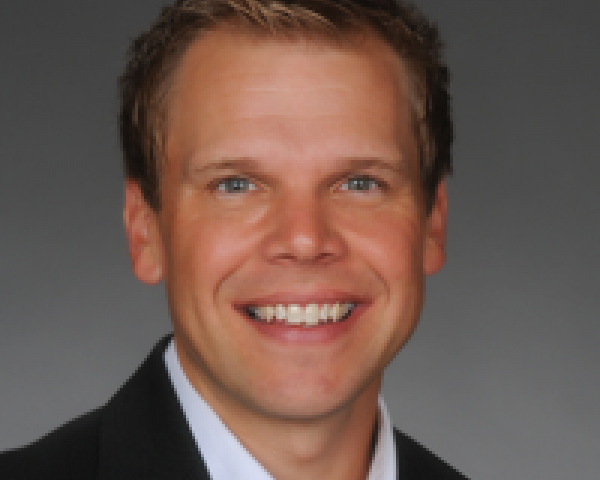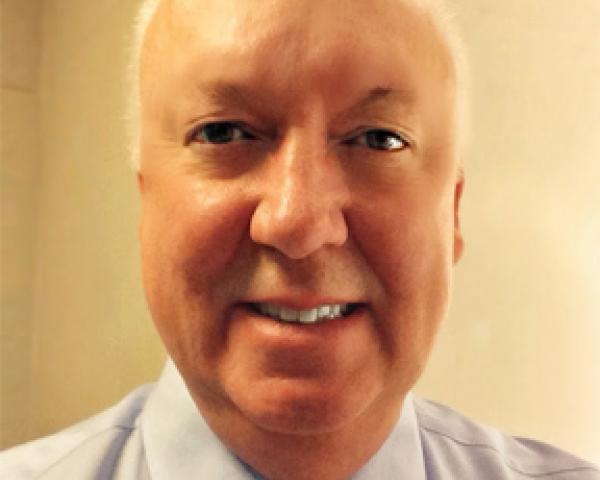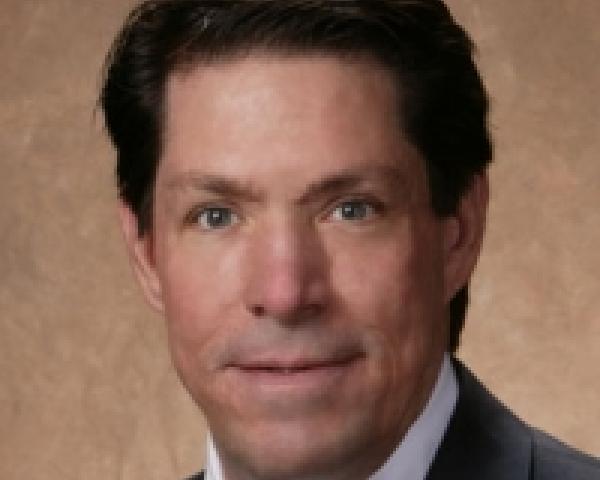Debunking ‘Opt-Out’ Myths (Part 6)
Although the option industry is new and does not provide all the data that workers' comp does, rapid progress is being made.

Although the option industry is new and does not provide all the data that workers' comp does, rapid progress is being made.

Get Involved
Our authors are what set Insurance Thought Leadership apart.
|
Partner with us
We’d love to talk to you about how we can improve your marketing ROI.
|

Bill Minick is the president of PartnerSource, a consulting firm that has helped deliver better benefits and improved outcomes for tens of thousands of injured workers and billions of dollars in economic development through "options" to workers' compensation over the past 20 years.
Risk management is helping nonprofits see beyond their organizational boundaries and collaborate more with their communities.

 Engaging your community
Perhaps now is the time for “nonprofits” to change the semantics of their sector to a broader, community-based organization (CBO) concept. In fact, one idea that has emerged is an alternative label for a nonprofit: CBO.
Perhaps — as CBOs — we will more effectively live out our missions, starting with a positive, inclusive approach rather than a negative (“non”) dynamic. And, no doubt, we’ll better manage risk through these alignments.
Ultimately, we’re better off with collaboration!
Engaging your community
Perhaps now is the time for “nonprofits” to change the semantics of their sector to a broader, community-based organization (CBO) concept. In fact, one idea that has emerged is an alternative label for a nonprofit: CBO.
Perhaps — as CBOs — we will more effectively live out our missions, starting with a positive, inclusive approach rather than a negative (“non”) dynamic. And, no doubt, we’ll better manage risk through these alignments.
Ultimately, we’re better off with collaboration!
Get Involved
Our authors are what set Insurance Thought Leadership apart.
|
Partner with us
We’d love to talk to you about how we can improve your marketing ROI.
|

Peter A. Persuitti leads the Global Nonprofit Practice and Global Religious Practice for Arthur J. Gallagher & Co. in Chicago. As a dedicated religious practice, Gallagher works with more than 24,000 non-profits around the world.
Do-it-yourself kits now let anyone conduct a ransomware attack, and small and medium-sized businesses (SMBs) are a ripe target.


Get Involved
Our authors are what set Insurance Thought Leadership apart.
|
Partner with us
We’d love to talk to you about how we can improve your marketing ROI.
|

Byron Acohido is a business journalist who has been writing about cybersecurity and privacy since 2004, and currently blogs at LastWatchdog.com.
While the world has moved on from parachute pants, many workers' compensation payment processes are as outdated as a Sony Walkman.

Get Involved
Our authors are what set Insurance Thought Leadership apart.
|
Partner with us
We’d love to talk to you about how we can improve your marketing ROI.
|

Dave Stair is the director of insurance payment solutions for DataPath. With nearly two decades of experience in the workers’ compensation industry in sales and consulting, Stair has an extensive track record helping workers' compensation payers manage and control claim costs.
Imagine a time when much of insurance buying is inverted, beginning with an offer for coverage, rather than a lengthy application and quote request.

Get Involved
Our authors are what set Insurance Thought Leadership apart.
|
Partner with us
We’d love to talk to you about how we can improve your marketing ROI.
|

David Bassi is an industry leader with experience in underwriting. risk management and analytics. He has led efforts at prominent global companies to integrate advances in data science, technology and the capital markets into traditional business models.
Think of your most recent experience with teams. Were others as effective as possible? Were you? Not likely.

Research consistently shows that teams underperform, despite all the extra resources they have. That’s because problems with coordination and motivation typically chip away at the benefits of collaboration.Problems with coordination and motivation interfering with team collaboration and performance—doesn’t that sound like a rather modest challenge that could be resolved with more effective team management? Sure, to a certain extent. Teams are often too large; they are thoughtlessly staffed (proximity and position rather than proven talents and ability to produce results); and they are routinely launched with murky objectives, vague group member accountabilities and no formal support network for team process management. In other words, most teams don’t meet the five basic conditions Hackman, in his book Leading Teams, said teams require to perform effectively:
…the social loafer must find at least one group member that CAN and WILL achieve the group's goals and ALLOW themselves to be social loafed on. "Social Loafer Bait" is the term used here to describe the profile of the ideal target for social loafers.This problem isn’t new. Max Ringelmann, a French agricultural engineer, conducted one of the earliest social loafing experiments in 1913, asking participants to pull on a “tug of war” rope both individually and in groups. When people were part of a group, they exerted much less effort pulling the rope than they did when pulling alone. According to Joshua Kennon, Ringelmann’s social loafing results were replicated over the years in many other experiments (involving typing, shouting, clapping, pumping water, etc.), leading psychologists to believe that humans tend toward social loafing in virtually all group activities. Kennon shared two other conclusions:
93% of employees report they have co-workers who don't pull their weight, but only one in 10 confronts lackluster colleagues.I suppose the reality is that unless work groups are tightly managed, they offer excellent cover for slackers—relative anonymity, little or no pressure from team members, great individual performance camouflage—with only a slight threat of exposure or penalty for not being a good team player. So the solution to the social loafer problem probably involves not only changes in how groups are formed, resourced and supported but also changes in the group work dynamic to eliminate the cover and camouflage and to illuminate how each individual contributes to the group work effort. (This is sometimes accomplished in university student work groups by using a formal peer review process to help group members hold each other accountable.) As you might expect, Google is serious about teamwork (all Google employees work on at least one team), and Google wants teams to be successful. A recent study of team effectiveness at Google determined that five team dynamics (psychological safety; dependability; structure and clarity; meaning of work; and impact of work) are more important to successful teams than the talents of the individuals on the teams. To help teams manage these dynamics, Google developed a tool called the gTeams exercise, described by Julia Rozovsky of Google People Operations as:
…a 10-minute pulse-check on the five dynamics, a report that summarizes how the team is doing, a live in-person conversation to discuss the results and tailored developmental resources to help teams improve.According to Rozovsky, Google teams reported that having a framework around team effectiveness and a forcing function (the gTeams exercise) to talk about these dynamics was the part of the experience that had the most impact. That’s not surprising, because any “forcing function” that puts a public spotlight on ineffective or unacceptable behavior makes it easier to identify and eliminate that behavior. Given the concentration of talent at Google, I imagine the social loafers there probably boast a more refined slacker “craftiness” pedigree than most of us normally encounter. Still, I am betting the Google slackers aren’t very pleased with the light and heat generated by the gTeams exercise spotlight.
Get Involved
Our authors are what set Insurance Thought Leadership apart.
|
Partner with us
We’d love to talk to you about how we can improve your marketing ROI.
|

Dean K. Harring retired in February 2013 as the executive vice president and chief claims officer at QBE North America in New York. He has more than 40 years experience as a claims senior executive with companies such as Liberty Mutual, Commercial Union, Providence Washington, Zurich North America, GAB Robins and CNA.
Nurse triage is spreading from big firms to boutique, regional firms as a way to control costs. And telemedicine changes the whole game for workers' comp.

Get Involved
Our authors are what set Insurance Thought Leadership apart.
|
Partner with us
We’d love to talk to you about how we can improve your marketing ROI.
|

Paul Binsfeld is the CEO of Company Nurse, a firm specializing in injury management for workers' compensation. He has more than 20 years of experience in the workers' compensation industry.
Just as retailers remodel every few years, insurers need to rethink their digital interfaces while optimizing their back-end systems.

Get Involved
Our authors are what set Insurance Thought Leadership apart.
|
Partner with us
We’d love to talk to you about how we can improve your marketing ROI.
|

Denise Garth is senior vice president, strategic marketing, responsible for leading marketing, industry relations and innovation in support of Majesco's client-centric strategy.
Among many reasons, doctors feel that health insurance providers don't let them provide the absolute best care to patients.

Get Involved
Our authors are what set Insurance Thought Leadership apart.
|
Partner with us
We’d love to talk to you about how we can improve your marketing ROI.
|

Chris Phillips has been president of MBA Medical Business Associates since 1997. In addition to managing the implementation of new clients, he also handles client relations and works to keep MBA on the leading edge of technology.
Building a fail-fast culture in a slow-moving company in an industry full of tradition is hard, but some principles can guide you through the transition.

Get Involved
Our authors are what set Insurance Thought Leadership apart.
|
Partner with us
We’d love to talk to you about how we can improve your marketing ROI.
|

Mary Lyons currently leads PwC’s talent innovation practice. A practice focused on supporting global clients to reinvent their talent strategy and operations for a changing world. In a global marketplace undergoing significant transformation, people and capability are key to delivering the business strategy.